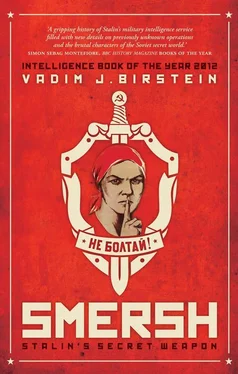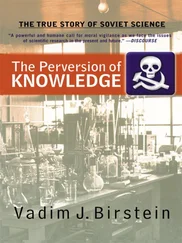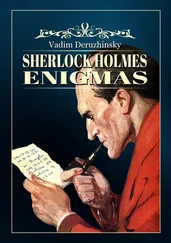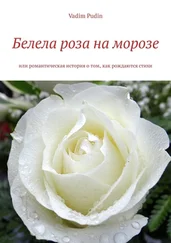General Yamada was more fortunate; he survived imprisonment and returned to Japan. Hiroki Nohara, deputy head of the Intelligence Department of Yamada’s army, was sentenced to death in February 1947 as a spy and executed. 60The Japanese Consul General in Harbin, Kimio Miyagawa, died in Lefortovo Prison in Moscow before he was tried, while General Shun Akifusa, head of the Japanese Military Mission in Harbin, was convicted of being a spy in December 1948 and sentenced to a 25-year imprisonment. Four months later he died in Vladimir Prison. 61
To the disappointment of the SMERSH leadership, in August 1945 the last Manchurian Emperor Pu Yi was captured by an NKVD, not a SMERSH, operational group. Although the commander in chief in the Soviet Far East, Marshal Aleksandr Vasilevsky, ordered the transfer of Pu Yi to SMERSH, NKVD Commissar Beria only allowed SMERSH officers to interrogate Pu Yi; he remained in NKVD hands. 62
Since SMERSH officers wore Red Army uniforms, people arrested by SMERSH operatives frequently did not know that they were in the hands of a separate secret service. Even Soviet POWs used to think that the NKVD or NKGB had arrested them. For instance, Lev Mishchenko, a Moscow physicist who volunteered in 1941 for the opolchenie (detachments of civilian volunteers) and was then captured by the Germans, wrote in the 2000s: ‘In June 1945, I was arrested by the counterintelligence department SMERSH of the 8th Guard Army. SMERSH… was the name of the NKGB departments within the army.’ 63This misunderstanding led to confusing mistakes regarding SMERSH in the memoirs of many foreign former prisoners of SMERSH.
One of SMERSH’s last important tasks was its involvement in the International Nuremberg Trial. 64Abakumov’s investigators proposed five prisoners as possible defendants at Nuremberg. However, the Politburo chose only one of the people on SMERSH’s list: the relatively unimportant Hans Fritzsche, an official of Paul Joseph Goebbels’s Propaganda Ministry, who was ultimately acquitted. It’s possible that Stalin settled on Fritzsche because he did not want his former allies to know that important generals such as Mohnke were in his hands.
The NKVD also brought one defendant from its POW camps, Grand Admiral Erich Raeder, commander of the German Navy until 1943. He was sentenced to life in prison. The main testimony presented by Soviet prosecutors consisted of excerpts from the recorded interrogations of many SMERSH prisoners, but the prisoners themselves were not produced.
Colonel Sergei Kartashov, head of the 2nd Department of SMERSH, which was in charge of the interrogation of important German POWs and Soviet servicemen who had been in German captivity, was the first to arrive in Nuremberg. His assignment was to do an initial evaluation of the situation. Then a special team of three SMERSH officers headed by Mikhail Likhachev, a deputy head of SMERSH Investigation Department, brought Fritzsche to Nuremberg. However, the main task of this team was to monitor the Soviet delegation—the prosecutors, judges, translators, and so forth. They were also tasked with preventing any discussion at the trial of the Molotov–Ribbentrop Pact or of Soviet responsibility for the massacre of 22,000 captured Polish officers executed in 1940 in the Katyn Forest and two other places. 65
After one of the Soviet military prosecutors, General Nikolai Zorya, was found dead with a gunshot wound to his head in his hotel room during the trial, it became evident that problems existed within the Soviet delegation. The official Soviet statement claimed that the death was due to ‘the incautious usage of a fire-arm by General Zorya’. 66But according to Zorya’s son, Likhachev or one of his men killed Prosecutor Zorya to prevent a discussion of the Katyn Forest massacre.
At the same time, in early 1946, SMERSH prepared a series of trials in Moscow against a number of old White Russian generals who had been captured in Europe and Manchuria, including former Soviet General Andrei Vlasov. The most important defendants were tried in closed sessions of the Military Collegium of the Soviet Supreme Court. Only a few short sentences announcing the generals’ executions were published in the press. However, these trials took place after the end of SMERSH and will be discussed in another book.
The formal end of SMERSH came in May 1946, when it was merged with the former NKGB, which was now renamed the MGB (State Security Ministry). Abakumov became head of the MGB, and key personnel from SMERSH headquarters in Moscow and from the front directorates took over the key positions in the MGB. As MGB minister, Abakumov supervised not only military counterintelligence but also foreign intelligence and civilian domestic counterintelligence within the USSR, which were the main functions of the former NKGB. He continued to report directly to Stalin, and the MGB became the primary tool for carrying out Stalin’s purges and repressions from 1946 until 1951, when Abakumov himself was arrested. The famous Leningrad Case and the Jewish Anti-Fascist Committee Case were only two of the important prosecutions prepared by Abakumov and the MGB in the late 1940s.
In Eastern Europe, the former SMERSH front directorates were converted into the MGB directorates of the Soviet occupation armies. Their function remained the same as during the war—finding spies and traitors within Soviet troops and purging local areas of Soviet political enemies. Hundreds of people were arrested or kidnapped and sent to the Soviet Union. Many times they were simply grabbed off the streets, and their family and friends never knew what had happened to them. Abakumov’s first deputy, Nikolai Selivanovsky, supervised the purges in Poland. One of Abakumov’s assistants, Pyotr Timofeev, controlled the situation in Romania. The former head of one of SMERSH’s front directorates, Mikhail Belkin, oversaw events in Hungary. 67In Western Europe, SMERSH operatives worked under the cover of the staff of the Plenipotentiary on Repatriation, Colonel General Fyodor Golikov.
Former SMERSH officers also worked in Eastern Europe as MGB advisers to the local, newly organized pro-Soviet state security services and participated in the preparation of East European show trials. Belkin and Kartashov were responsible for arrests and trials in Budapest, while Likhachev interrogated prisoners in Bulgaria, Hungary, and Czechoslovakia. Since these officers reported directly to Abakumov, and Abakumov reported to Stalin, Stalin’s control over these trials was assured.
The majority of the important SMERSH prisoners captured during and just after the war were kept and interrogated in Moscow investigation prisons until 1948, when they were sentenced. The rest remained in these prisons until 1950–52, when they were finally tried. Many of them, including former foreign diplomats, were accused of spying; the bizarre paragraph 4 of Article 58, ‘assistance to the world bourgeoisie’, was also frequently used. The luckiest spies and traitors were tried between May 26, 1947 and January 12, 1950, during a period when the death sentence was replaced by 25-year imprisonment in labor camps. There was a practical, not a humane, reason behind this abolition: with the loss of many millions of men during the war, Stalin needed unpaid workers to help restore industry.
In February–March 1948, special labor camps (at first six, later four more) with especially harsh conditions of life and work were created for ‘especially dangerous prisoners’, i.e. prisoners sentenced under Article 58. 68The political prisoners were separated from criminals and moved to these special camps, while the most important political prisoners, especially with 25-year terms, were put in three special prisons—Vladimir, Verkhne-Uralsk and Aleksandrovsk. New convicts convicted under Article 58 were assigned to these special labor camps and prisons exclusively. As in the Nazi concentration camps, prisoners in special camps had numbers attached to their clothes. 69Therefore, most of the important SMERSH prisoners ended up in this special penal system. In January 1953, there were 221,727 political prisoners in special camps, and 1,313 prisoners in special prisons. 70
Читать дальше












